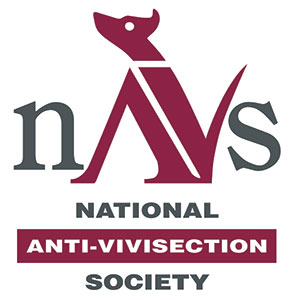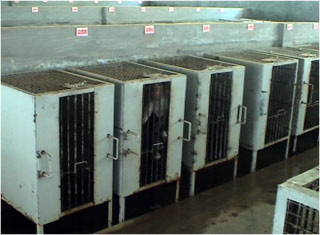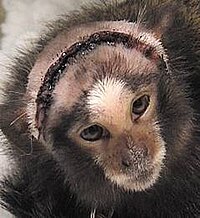
Animal testing, also known as animal experimentation, animal research, and in vivo testing, is the use of non-human animals in experiments that seek to control the variables that affect the behavior or biological system under study. This approach can be contrasted with field studies in which animals are observed in their natural environments or habitats. Experimental research with animals is usually conducted in universities, medical schools, pharmaceutical companies, defense establishments, and commercial facilities that provide animal-testing services to the industry. The focus of animal testing varies on a continuum from pure research, focusing on developing fundamental knowledge of an organism, to applied research, which may focus on answering some questions of great practical importance, such as finding a cure for a disease. Examples of applied research include testing disease treatments, breeding, defense research, and toxicology, including cosmetics testing. In education, animal testing is sometimes a component of biology or psychology courses. The practice is regulated to varying degrees in different countries.

Vivisection is surgery conducted for experimental purposes on a living organism, typically animals with a central nervous system, to view living internal structure. The word is, more broadly, used as a pejorative catch-all term for experimentation on live animals by organizations opposed to animal experimentation, but the term is rarely used by practising scientists. Human vivisection, such as live organ harvesting, has been perpetrated as a form of torture.

In the animal rights movement, cruelty-free is a label for products or activities that do not harm or kill animals anywhere in the world. Products tested on animals or made from animals are not considered cruelty-free, since these tests are often painful and cause the suffering and death of millions of animals every year.
Cruelty Free International is an animal protection and advocacy group that campaigns for the abolition of all animal experiments. They organise certification of cruelty-free products which are marked with the symbol of a leaping bunny.

The Animals Act 1986, sometimes referred to as ASPA, is an Act of the Parliament of the United Kingdom passed in 1986, which regulates the use of animals used for research in the UK. The Act permits studies to be conducted using animals for procedures such as breeding genetically modified animals, medical and veterinary advances, education, environmental toxicology and includes procedures requiring surgery, if certain criteria are met. Revised legislation came into force on 1 January 2013. The original act related to the 1986 EU Directive 86/609/EEC which was updated and replaced by EU Directive 2010/63/EU
Shamrock Farm was the United Kingdom's only non-human primate importation and quarantine centre, located in Small Dole, near Henfield in West Sussex. The centre, owned by Bausch and Lomb and run by Charles River Laboratories, Inc. for Shamrock (GB) Ltd, provided animals to various laboratories and universities for use in animal testing. It was Europe's largest supplier of primates to laboratories, and held up to 350 monkeys at a time.

The Silver Spring monkeys were 17 wild-born macaque monkeys from the Philippines who were kept in the Institute for Behavioral Research in Silver Spring, Maryland. From 1981 until 1991, they became what one writer called the most famous lab animals in history, as a result of a battle between animal researchers, animal advocates, politicians, and the courts over whether to use them in research or release them to a sanctuary. Within the scientific community, the monkeys became known for their use in experiments into neuroplasticity—the ability of the adult primate brain to reorganize itself.
The Animal Procedures Committee advised the British Home Secretary on matters related to animal testing in the UK. The function of the committee was made a statutory requirement by the Animals Act 1986, which mandated that it should have at least 12 members, excluding the chair. The APC no longer exists as the ASPA has been revised in accordance with EU legislation. It was disbanded on 31 December 2012 and was replaced by the Animals in Science Committee in 2013.

Tipu Zahed Aziz, FMedSci is a Bangladeshi-born British professor of neurosurgery at the John Radcliffe Hospital in Oxford, Aarhus Denmark and Porto, Portugal. He specialises in the study and treatment of Parkinson's disease, multiple sclerosis, dystonia, spasmodic torticollis, fixed abnormal posture of the neck, tremor, and intractable neuropathic pain. Besides his medical work, he is also notable as a public commentator in support of animal experimentation.
Gillian Rose Langley is a British scientist and writer who specialises in alternatives to animal testing and animal rights. She was, from 1981 until 2009, the science director of the Dr Hadwen Trust for Humane Research, a medical research charity developing non-animal research techniques. She was an anti-vivisection member of the British government's Animal Procedures Committee for eight years, and has worked as a consultant on non-animal techniques for the European Commission, and for animal protection organizations in Europe and the United States. Between 2010 and 2016 she was a consultant for Humane Society International.

The National Anti-Vivisection Society (NAVS) is an international not-for-profit animal protection group, based in London, working to end animal testing, and focused on the replacement of animals in research with advanced, scientific techniques. Since 2006, the NAVS has operated its international campaigns under the working name Animal Defenders International (ADI), and the two groups now work together under the ADI name.

The history of animal testing goes back to the writings of the Ancient Greeks in the 4th and 3rd centuries BCE, with Aristotle and Erasistratus one of the first documented to perform experiments on nonhuman animals. Galen, a physician in 2nd-century Rome, dissected pigs and goats, and is known as the "Father of Vivisection." Avenzoar, an Arabic physician in 12th-century Moorish Spain who also practiced dissection, introduced animal testing as an experimental method of testing surgical procedures before applying them to human patients. Although the exact purpose of the procedure was unclear, a Neolithic surgeon performed trepanation on a cow in 3400-3000 BCE. This is the earliest known surgery to have been performed on an animal, and it is possible that the procedure was done on a dead cow in order for the surgeon to practice their skills.

Experiments involving non-human primates (NHPs) include toxicity testing for medical and non-medical substances; studies of infectious disease, such as HIV and hepatitis; neurological studies; behavior and cognition; reproduction; genetics; and xenotransplantation. Around 65,000 NHPs are used every year in the United States, and around 7,000 across the European Union. Most are purpose-bred, while some are caught in the wild.

The Boyd Group is a Britain-based, independent think tank considering issues relating to animal testing.

Nafovanny in Vietnam is the largest captive-breeding primate facility in the world, supplying long-tailed macaques to animal testing laboratories, including Huntingdon Life Sciences in the UK and Covance in Germany.
Wickham Laboratories Ltd is a contract testing laboratory that supports the pharmaceutical and medical device industries. Located in Hampshire, England, it was founded in 1962 and remains an independent company.

Harlan Sprague Dawley Inc. was a supplier of animals and other services to laboratories for the purpose of animal testing. It provided pre-clinical research tools and services for the pharmaceutical, biotechnology, agrochemicals, industrial chemical, and food industries.
The New England Anti-Vivisection Society (NEAVS) is a national, registered 501(c)(3) nonprofit organization "dedicated to ending the use of animals in research, testing, and science education" and replacing them with "modern alternatives that are ethically, humanely, and scientifically superior."

The Anti-Vivisection Coalition (AVC) is a United Kingdom-based pressure group which campaigns against animal testing. The AVC are described as 'main driver' of the Stop Vivisection Initiative, a petition launched in November 2012 which attracted more than a million signatures. The Stop Vivisection Initiative called upon the European Union to ban animal testing. If the signatures are verified, "the initiative will be granted hearings at the European Commission and the European Parliament".
The Wisconsin National Primate Research Center (WNPRC) is a federally funded biomedical research facility located at the University of Wisconsin-Madison. The WNPRC is part of a network of seven National Primate Research Centers which conduct biomedical research on primates. As of 2020, the center houses approximately 1,600 animals.













